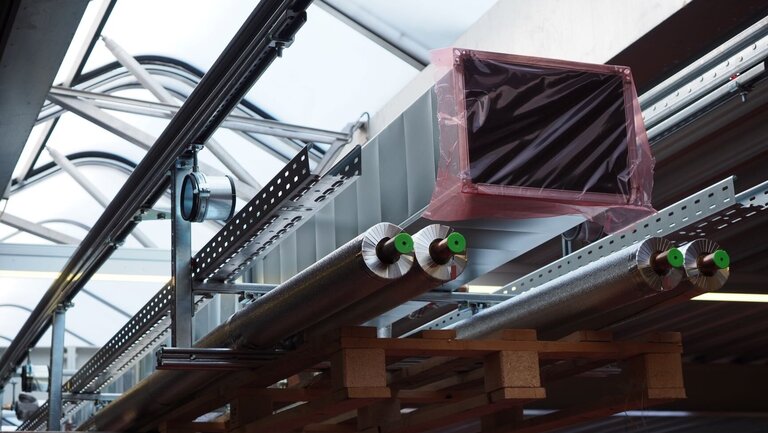Stuttgart and Künzelsau, December 17, 2020
Factors such as poor weather still cause unnecessary delays on many construction sites in Germany. But many building modules could be prefabricated in series in factory halls. Opting for so-called modular prefabricated construction can not only bring considerable cost and time savings in planning, production and assembly, but may also result in better working conditions for skilled workers and offer a more environmentally friendly approach. But modular solutions are still rare in the area of building services equipment (BSE). Drees & Sommer SE and Adolf Würth GmbH & Co. KG, based in Künzelsau, want to change that: The two companies have collaborated to design a new, innovative BSE module. It will be used for the first time in this field in a new Drees & Sommer’s office building at its company headquarters in ‘Obere Waldplätze’ in Stuttgart.
Video zur cooperative venture von Drees & Sommer und Würth:
Construction of new OWP12 office building – Prefabrication of building modules
For digital workflows to set the pace not only in planning, but also on the construction site, it is important to promote processes like digital Lean Construction Management and just-in-time delivery. In the same way as in industrial production, repetitive workflows in the construction industry can be digitally standardized, allowing subunits of a building to be prefabricated.
“Today 80 percent of components are processed on-site, and only 20 percent are prefabricated. This ratio will have to be reversed in future. Many components can be manufactured in a factory regardless of weather, and then delivered just-in-time to the construction site,” explains Thomas Berner, Associate Partner at Drees & Sommer SE, a planning and consulting company specializing in the construction and real estate sector. As project manager, he is responsible for the Obere Waldplätze 12 office building (OWP12) – currently under construction at the company headquarters in Stuttgart-Vaihingen. Industrially prefabricated, modularized components are to be used in the new building to the greatest extent possible.
Trades will merge in the future
Drees & Sommer and Würth – the world market leader in assembly and fastening materials – have developed two prototypes of the BSE module for the building. They include elements of building services equipment, such as heating, air conditioning and electrical systems. The modules will be prefabricated in the production hall and then delivered and installed on the OWP12 construction site before the end of this year. Director and building services equipment expert Johannes Wiesinger is managing design on behalf of Drees & Sommer: “We should no longer treat the individual trades as separate during construction projects, as they will increasingly merge with each other in future.”
The BSE modules also offer advantages for installation on site: They can be easily and quickly transported and installed on the construction site. What normally takes about twelve hours using conventional methods takes less than 30 minutes with this approach.
The experts from Würth and Drees & Sommer have also thought about environmentally friendly dismantling. “The BIM model tells us exactly which modules with which materials are installed in which areas of buildings. This digital record is also a prerequisite for ensuring greater sustainability. Leasing business models are also conceivable. At the end of the contract period or service life of a building, the modules can be removed. One thing is certain: Nothing goes to waste,” explains Wiesinger.
OWP 12 as a demonstration building for principals
The new building features photovoltaic systems on the roof and on the south facade, a newly developed, highly insulating facade design, geothermal energy via boreholes, and a green northern facade. So when Drees & Sommer moves into its new offices in Stuttgart-Vaihingen in autumn 2021, the employees will be working in a building that meets the Energy Plus standard, generates more energy than it consumes in operation, and implements the Cradle to Cradle circular economy approach to the greatest possible extent.
Costing some € 22 million, the four-storey building has a gross floor area of about 7,000 square meters and features a large conference area, facilities for employees such as a terrace, a cafeteria, as well as a canteen with seating for up to 1,000. Some 200 employees will work in the building.
